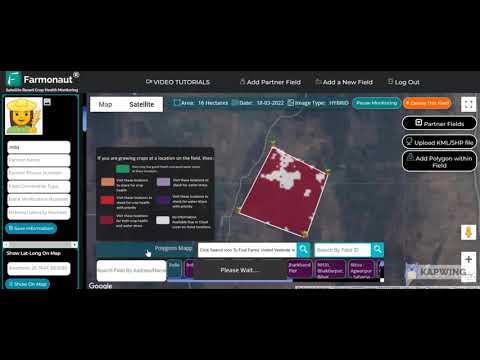Maximizing Alfalfa Yields: Expert Guide to Forage Management and Baleage Production
“Proper potassium fertilization can increase alfalfa yield by up to 25% and improve stand longevity by 1-2 years.”
Welcome to our comprehensive guide on maximizing alfalfa yields through expert forage management techniques and baleage production methods. In this article, we’ll explore cutting-edge practices for high-quality stored forage, delve into nutrient management strategies for hayfields, and uncover the secrets to extending alfalfa stand longevity. Whether you’re a seasoned farmer or just starting out, this guide will provide valuable insights to revolutionize your forage management approach.
The Importance of Alfalfa in Modern Agriculture
Alfalfa, often referred to as the “Queen of Forages,” plays a crucial role in sustainable agriculture and livestock feed production. Its high nutritional value, ability to fix nitrogen in the soil, and potential for multiple harvests per year make it an indispensable crop for many farmers. However, maximizing alfalfa yields requires a deep understanding of various forage management techniques and the latest industry trends.

Forage Management Techniques for Optimal Alfalfa Production
To achieve high yields and maintain the quality of alfalfa stands, we must implement effective forage management techniques. Here are some key strategies:
- Proper soil preparation: Ensure optimal pH levels (6.5-7.0) and adequate drainage for alfalfa growth.
- Variety selection: Choose alfalfa varieties suited to your climate and intended use (hay, silage, or grazing).
- Timely planting: Plant alfalfa at the right time based on your region’s climate to establish strong stands.
- Weed control: Implement effective weed management strategies to reduce competition for nutrients and water.
- Irrigation management: Provide adequate water, especially during dry periods, to maintain yield and quality.
Implementing these techniques can significantly improve your alfalfa yields and stand longevity. For precise monitoring of your alfalfa fields, consider using Farmonaut’s satellite-based crop health monitoring tools.
Baleage Production: A Game-Changer in Forage Preservation
Baleage production has emerged as a revolutionary method for preserving high-quality forage, especially in humid regions where traditional haymaking can be challenging. This technique involves wrapping wilted forage in plastic to create an anaerobic environment, resulting in fermentation and preservation of nutrients.
“Anaerobic forage preservation through baleage production can reduce dry matter losses by 5-10% compared to traditional hay-making methods.”
Key Steps in Baleage Production:
- Cut forage at the optimal stage of maturity
- Allow forage to wilt to 40-60% moisture content
- Bale the wilted forage into tight, uniform round bales
- Wrap bales with stretch plastic within 12 hours of baling
- Store wrapped bales in a well-drained area
Baleage offers several advantages over traditional dry hay, including reduced weather dependency, improved nutrient retention, and decreased storage losses. By mastering baleage production, farmers can ensure a consistent supply of high-quality stored forage for their livestock.
Nutrient Management in Hayfields: The Key to Sustained Productivity
Effective nutrient management is crucial for maintaining high yields and forage quality in alfalfa hayfields. One of the most critical nutrients for alfalfa production is potassium.
The Role of Potassium Fertilization in Alfalfa Production
Potassium plays a vital role in alfalfa growth, stress tolerance, and stand longevity. Proper potassium fertilization can lead to:
- Increased yield potential
- Improved winter hardiness
- Enhanced disease resistance
- Better water use efficiency
To determine the optimal potassium application rates, we recommend conducting regular soil tests and tissue analyses. This data-driven approach ensures that your alfalfa crops receive the right amount of nutrients at the right time.
Farmonaut’s API can provide valuable insights into soil moisture levels and vegetation health, helping you make informed decisions about fertilizer application timing and rates.
Legumes in Pasture Management: Boosting Yield and Nutritional Quality
Incorporating legumes like clover into alfalfa pastures can significantly enhance overall forage productivity and quality. Legumes offer several benefits:
- Nitrogen fixation, reducing the need for synthetic fertilizers
- Improved protein content of the forage mix
- Enhanced soil structure and organic matter content
- Extended grazing season and improved animal performance
When integrating legumes into your pasture management strategy, consider factors such as soil pH, drainage, and grazing intensity to ensure successful establishment and persistence of the legume component.

Anaerobic Forage Preservation: Maximizing Feed Quality
Anaerobic forage preservation, such as silage and baleage production, offers numerous advantages for maintaining feed quality and reducing storage losses. This method involves creating an oxygen-free environment that promotes beneficial fermentation processes.
Key Principles of Anaerobic Forage Preservation:
- Rapid exclusion of oxygen
- Proper moisture content (typically 40-60% for baleage)
- Adequate fermentable carbohydrates
- Appropriate chop length or bale density
- Use of inoculants when necessary
By mastering anaerobic preservation techniques, farmers can ensure high-quality feed for their livestock throughout the year, even in challenging weather conditions.
Farmonaut’s API Developer Docs provide valuable resources for integrating weather data into your forage management decisions, helping you optimize harvest timing and preservation methods.
Extending Alfalfa Stand Longevity: Strategies for Long-Term Success
Maximizing the lifespan of your alfalfa stands is crucial for maintaining profitability and reducing the frequency of reestablishment. Here are some key strategies to extend stand longevity:
- Proper variety selection: Choose varieties with good disease resistance and winter hardiness.
- Optimal cutting management: Allow sufficient regrowth between cuttings and avoid late fall harvests in cold climates.
- Soil fertility maintenance: Regular soil testing and balanced nutrient applications, especially potassium and boron.
- Pest and disease management: Implement integrated pest management strategies to minimize damage from insects and pathogens.
- Traffic management: Minimize wheel traffic on wet soils and use controlled traffic patterns when possible.
By implementing these strategies, you can significantly extend the productive life of your alfalfa stands, reducing establishment costs and improving overall farm profitability.
Addressing Iron Toxicity in Forage Crops
Iron toxicity can be a significant challenge in forage crop production, particularly in poorly drained or waterlogged soils. Excessive iron uptake can lead to reduced yields, poor forage quality, and even plant death. To mitigate the risks of iron toxicity:
- Improve soil drainage through tile installation or surface grading
- Maintain proper soil pH to reduce iron availability
- Select iron-tolerant varieties when growing in high-risk areas
- Consider foliar applications of nutrients like manganese to counteract iron toxicity effects
Regular soil testing and plant tissue analysis can help identify potential iron toxicity issues before they become severe, allowing for timely intervention.
Innovative Technologies in Forage Management
The adoption of precision agriculture technologies can significantly enhance forage management practices. Tools like Farmonaut’s satellite-based crop monitoring system offer valuable insights into crop health, soil moisture levels, and potential stress factors. These technologies enable farmers to:
- Identify areas of concern within fields before they become visible to the naked eye
- Optimize irrigation scheduling based on real-time soil moisture data
- Make data-driven decisions about fertilizer applications and pest management
- Monitor crop development and predict optimal harvest timing
By leveraging these advanced tools, farmers can maximize their forage crop productivity while optimizing resource use and reducing environmental impact.
Alfalfa Yield Optimization Strategies
| Management Strategy | Estimated Yield Increase | Implementation Complexity | Cost-Benefit Ratio |
|---|---|---|---|
| Potassium Fertilization | 15-25% | Medium | 4 |
| Baleage Production | 10-20% | High | 3 |
| Legume Integration | 20-30% | Medium | 5 |
| Anaerobic Preservation | 5-15% | High | 4 |
The Future of Forage Management
As we look to the future, several emerging trends and technologies are poised to revolutionize forage management:
- Genetic improvements: Development of alfalfa varieties with enhanced drought tolerance, disease resistance, and nutritional profiles.
- Precision agriculture: Increased adoption of GPS-guided equipment, drone technology, and satellite imagery for more precise management of forage crops.
- Climate-smart practices: Implementation of conservation tillage, cover cropping, and other practices to enhance soil health and resilience to climate change.
- Advanced analytics: Utilization of big data and machine learning algorithms to optimize forage production systems and predict crop performance.
By staying informed about these advancements and adapting our management practices accordingly, we can continue to improve forage crop productivity and sustainability in the face of evolving challenges.
Conclusion: Embracing Innovation for Sustainable Forage Production
Maximizing alfalfa yields and optimizing forage management practices require a combination of traditional knowledge and cutting-edge technologies. By implementing the strategies discussed in this guide – from proper nutrient management and baleage production to the integration of legumes and adoption of precision agriculture tools – farmers can significantly improve their forage crop productivity and quality.
Remember that every farm is unique, and the best approach often involves adapting these practices to your specific conditions and goals. Regularly assess your forage management strategies, stay informed about new developments in the field, and don’t hesitate to seek advice from agricultural experts or leverage advanced tools like Farmonaut’s satellite-based crop monitoring system.
By embracing innovation and committing to continuous improvement, we can ensure the long-term sustainability and profitability of our forage production systems, contributing to a more resilient and productive agricultural sector.
Frequently Asked Questions (FAQ)
- What is the optimal cutting frequency for alfalfa?
The optimal cutting frequency depends on various factors, including climate, variety, and intended use. Generally, alfalfa should be cut at early bloom stage for dairy-quality hay, or at 10% bloom for beef cattle. This typically results in 3-4 cuttings per season in most regions. - How can I improve soil drainage in my alfalfa fields?
Improve soil drainage by installing tile drainage systems, implementing surface grading, or using raised beds. Incorporating organic matter into the soil can also enhance its structure and water-holding capacity. - What are the signs of potassium deficiency in alfalfa?
Potassium deficiency symptoms include yellowing of leaf margins, stunted growth, and reduced stand persistence. Regular soil testing and tissue analysis can help identify potential deficiencies before visible symptoms appear. - How does Farmonaut’s satellite monitoring help in forage management?
Farmonaut’s satellite monitoring provides real-time insights into crop health, soil moisture levels, and potential stress factors. This information helps farmers make informed decisions about irrigation, fertilization, and harvest timing, ultimately improving forage yield and quality. - What are the advantages of using baleage over traditional hay?
Baleage offers several advantages, including reduced weather dependency during harvest, improved nutrient retention, decreased storage losses, and the ability to preserve higher-moisture forage. It’s particularly beneficial in humid regions where hay-making can be challenging.
By addressing these common questions and implementing the strategies outlined in this guide, you’ll be well-equipped to maximize your alfalfa yields and optimize your forage management practices. Remember to stay informed about the latest industry trends and leverage innovative technologies like Farmonaut’s precision agriculture tools to stay ahead in the ever-evolving world of forage production.






